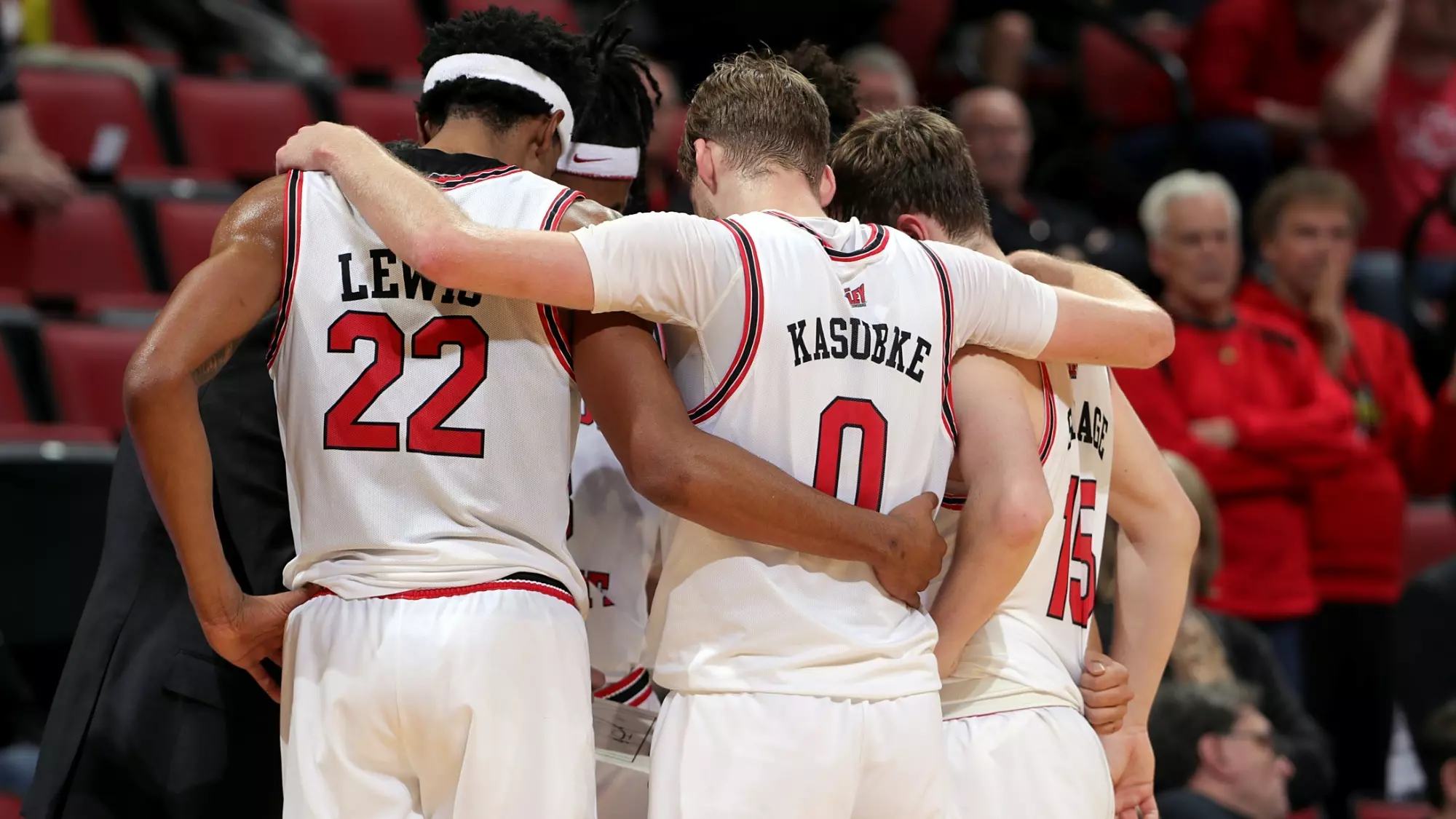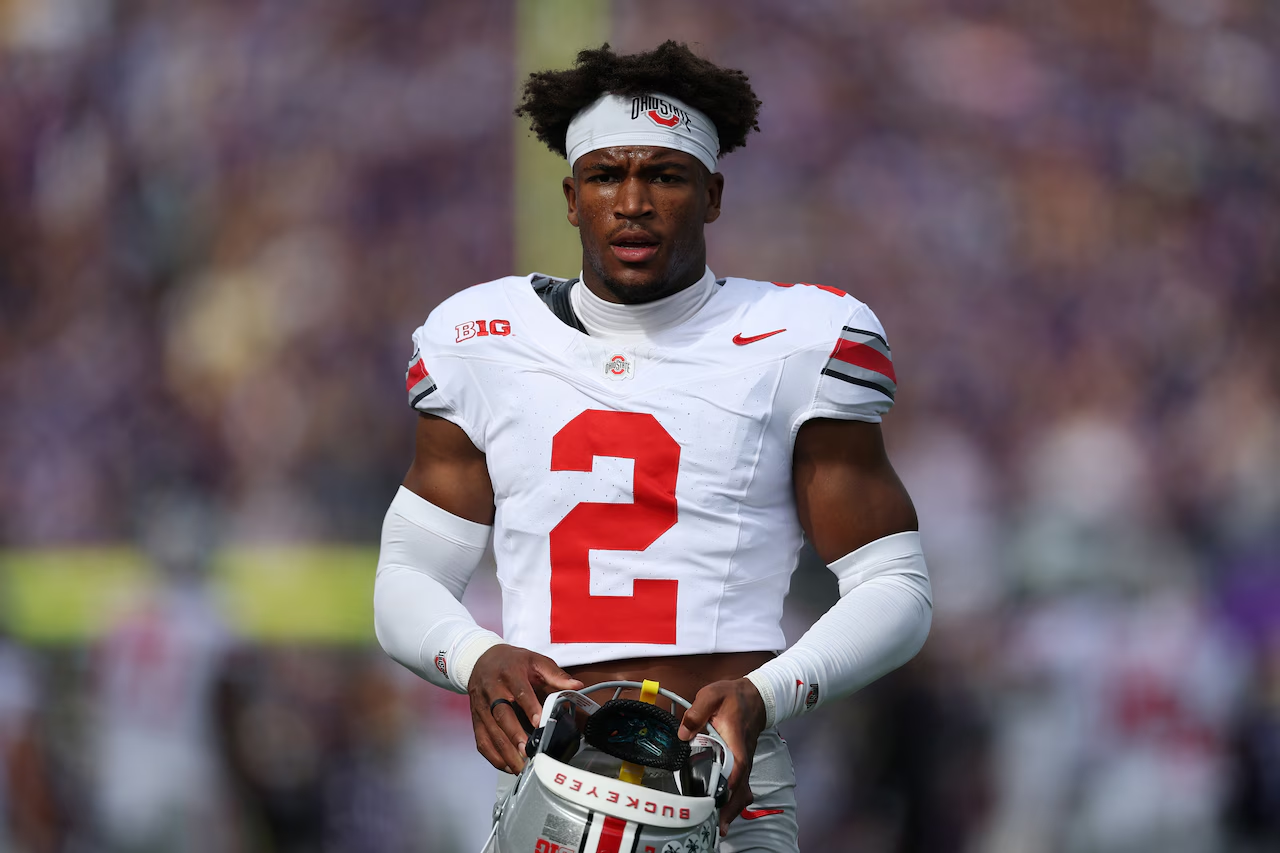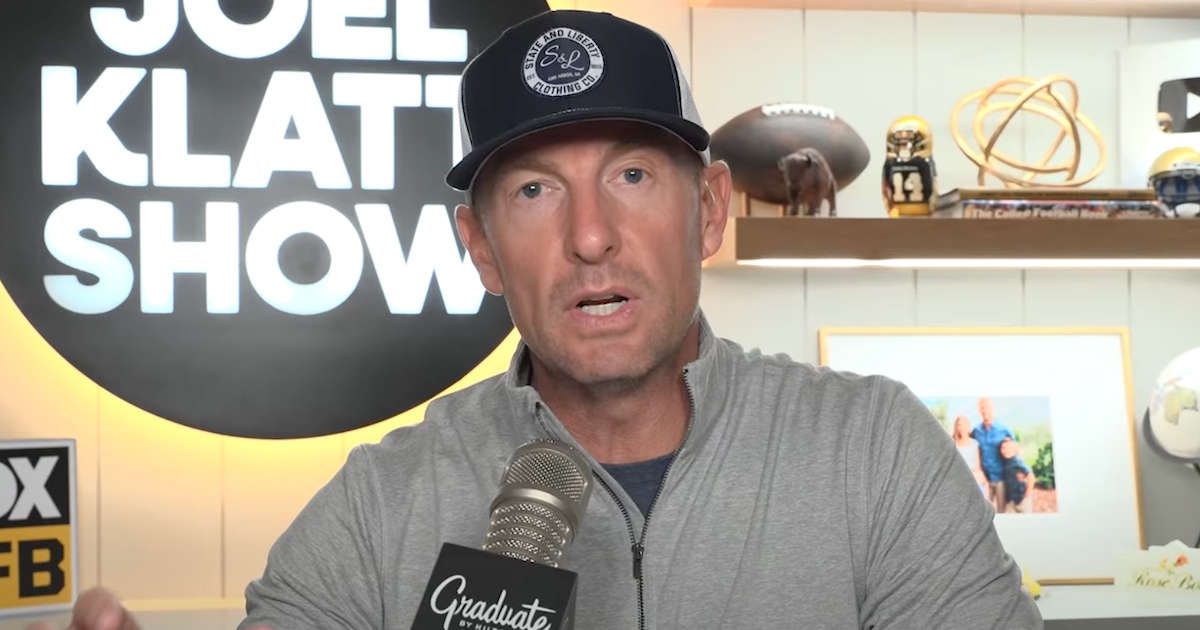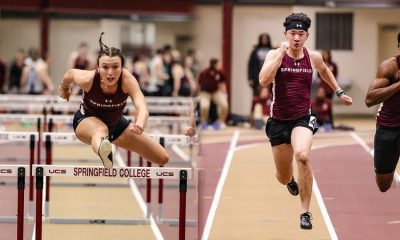NIL
Top 10 Illinois basketball transfer portal additions of all time



Illinois basketball has been able to see great success throughout the history of the program.
One of the reasons the Illini have won games is due to players transferring in. Some of the best players in program history didn’t start out in Champaign.
In recent years, the transfer portal has heated up even more. Despite it being a trendy thing, transferring has been a thing for decades now.
Here are the top 10 Illinois basketball transfer portal additions of all time
10. Shelly Clark
Not a lot of love is given to those who came before the 2020 burst of the transfer portal. In the early 1990s, Illinois was able to land a solid transfer who helped anchor the paint.
Shelly Clark started his college career at Indian Hills Community College. He was sensational there and then made his move for his final two seasons of college ball to Illinois.
With the Illini, Clark had a two-year average of 10.7 points, 7.4 rebounds, and 1.4 assists per game. His best season came in 1994-95 when he dropped 11.8 points, 8.3 rebounds, 1.5 assists, and 1.0 steals per contest.
Illinois made the NCAA tournament both years Clark was with the program, but we never made it out of the first round.
9. Rayvonte Rice
I thought Rayvonte Rice was going to be the shot in the arm John Groce needed at Illinois. That didn’t end up being the case, although Rice was a very good player.
Rice transferred to Illinois after two seasons at Drake. He didn’t miss a beat going up a level, as his numbers were very similar to when he was with the Bulldogs. Rice finished his two-year Illinois career averaging 16.1 points, 6.2 rebounds, 1.7 steals, and 1.6 assists per game.
The biggest reason Rice isn’t higher on the list of top transfer portal players of all-time is the fact that Illinois missed the NCAA tournament in both seasons he was in Champaign. At no fault of his own, Rice’s standing on this list was hampered by the coaching staff.
8. Kylan Boswell
There is a new name on the top transfer portal additions of all-time. Kylan Boswell has entered the chat, as he had a solid first season in Champaign.
I don’t know what it is about spending two seasons at another team before transferring, but Boswell fits the mold as the first two players. He spent two seasons at Arizona before deciding to bolt the program and come back home to Illinois.
In his first season in Champaign, Boswell averaged 12.3 points, 4.8 rebounds, 3.4 assists, and 1.1 steals per game. He helped lead Illinois to the second round of the NCAA tournament as well.
The book isn’t fully written for Boswell on this list. With a big senior campaign, he can easily work his way up into the top five, if not higher.
7. Craig Tucker
There are a few players on this list who started in the junior college ranks. That is where Illinois found Craig Tucker.
Tucker started his college career off at Coffeyville Community College. He was a star there, and that helped him get noticed by Lou Henson and the Illini.
After two seasons at Coffeyville, Tucker transferred out and landed at Illinois. He had two great years with the Illini, as his best season came in 1981-82 when he averaged 15.5 points, 2.9 assists, and 2.4 rebounds per game.
With the help of Tucker, Illinois made it to the second round of the NCAA tournament. He would later get drafted into the NBA.
6. Alfonso Plummer
Illinois had a big-time shooter in Alfonso Plummer join the team for one solid season. He was arguably one of the best shooters I have seen in Champaign in my lifetime.
Plummer spent two seasons with the Utah Utes before transferring to the Illinois program. While it was only for one season, Plummer lit up the scoreboard. He averaged 14.6 points, 2.5 rebounds, and 1.1 assists per game while shooting a blistering 40.8% from three-point range.
There was hope that Illinois would make a run in the 2022 NCAA tournament, but we fell short in the second round to Houston. Plummer was a great scorer for the Illini team, though.
5. Marcus Griffin
There was a legendary trio that came out of Peoria in the 1990s. Marcus Griffin was a part of that Peoria Manual squad.
Griffin had to make a quick pitstop at Lincoln College before traversing to Illinois for his great career. Griffin ended up spending two seasons at Illinois, where he would help the program reach great heights.
Both seasons’ numbers were very similar for the talented big man. His two-year average at Illinois was 11.1 points, 5.5 rebounds, and 1.4 blocks per game. The fact that Illinois saw success with Griffin as a main piece helped his top-five standing.
Illinois was able to get to the second round in year one with Griffin. In his final season, the Illini made it all the way to the Elite 8 only to lose a close game against Arizona.
4. Ken Norman
Illinois had some special moments in the 1980s. Ken Norman walked so the Flyin’ Illini could run.
Norman started his college career at Wabash Valley Community College. He spent one season there before transferring into the Illinois program.
With the Illini, Norman had some special seasons in the mid-1980s. As a senior, he averaged 20.7 points, 9.8 rebounds, 2.2 assists, 1.5 blocks, and 1.2 steals per game. He was also an All-American.
That season, Illinois was upset as a No. 3 seed in the first round of the NCAA tournament. The only reason Norman isn’t higher is due to that bad postseason showing.
3. Marcus Domask
Brad Underwood has been able to find some nice diamonds in the rough, and Marcus Domask fits that mold.
Southern Illinois got the first four years of Domask’s career, and then he transferred up to the big leagues for one final season.
The lone season at Illinois was pretty special, though. The Illini needed some help, and Domask came to the rescue. While most players’ numbers would drop going from a mid-major to a Big Ten program, Domask’s numbers held strong. He averaged 15.9 points, 5.0 rebounds, and 3.9 assists per game in his lone season at Illinois.
Illinois also saw great success with Domask as a key cog. The program made a run to the Elite 8, and he was a huge part of it.
2. Terrence Shannon Jr.
The No. 1 and No. 2 spots were tough. I think they are interchangeable. I have Terrence Shannon Jr. taking the No. 2 spot, though.
Shannon could have picked Illinois out of high school but didn’t. He played three seasons at Texas Tech before coming to Champaign. The wait was well worth it, though.
As soon as Shannon got to Illinois, he hit the ground running. His first year was solid, although Illinois didn’t fare well in the postseason. Year two is what put Shannon on the map.
In his final season at Illinois, Shannon averaged 23.0 points, 4.0 rebounds, 2.3 assists, and 1.0 steals per game. He was an All-American, and Illinois saw great success with Shannon leading the way. He was the rock on the Illinois team that made it to the Elite 8.
Kenny Battle
And with the top spot on the top transfer portal additions of all-time, Kenny Battle takes the cake.
Battle started his college career off in the state of Illinois. It just happened to be Northern Illinois instead of the Illini. Battle spent two great seasons with the Huskies before transferring out and committing to Illinois.
Lou Henson saw instant success with Battle leading the way. He spent two seasons in Champaign, and both years were great. For his two-year stint, Battle averaged 16.1 points, 5.2 rebounds, 2.3 steals, and 1.7 assists per game.
Illinois made it to the second round in year one with Battle. The following season, the program had an incredible run to the Final 4, only to fall just short to Michigan.
Battle would go on to be a first-round NBA Draft pick. He had big numbers at Illinois and led the program to a Final 4. That is why he is the top transfer of all time.
NIL
Major SEC program emerges as candidate for $2.4 million college football quarterback

Brendan Sorsby, a redshirt junior who split his first two years at Indiana before transferring to Cincinnati in 2024, posted an efficient, productive 2025 season.
In 12 games, he threw for 2,800 passing yards with 27 passing touchdowns and five interceptions, plus 580 rushing yards and nine rushing scores, making him among the more complete dual-threat QBs in the country.
Unfortunately for the Bearcats, he informed Cincinnati of his intent to enter the NCAA transfer portal on Monday and is also awaiting an NFL draft grade while he gauges options.
Brendan Sorsby’s public NIL profile ranks him among the higher-valued transfer assets nationally, with a reported valuation of around $2.4 million, ranking 12th among all NCAA athletes in 2025.
As college football’s winter transfer market quickens, Tennessee has now been connected to Sorsby, according to reporting by On3’s Pete Nakos.

The link arrives as the Vols’ quarterback picture for 2026 grows murky, creating a plausible landing spot for a veteran signal-caller.
Tennessee starter Joey Aguilar closed the 2025 regular slate with 3,444 passing yards, 24 TDs, and 11 INTs, but the depth chart behind him has thinned.
Backup Jake Merklinger has reportedly told staff he plans to enter the portal, and the only experienced alternatives are true freshmen and early enrollees such as George MacIntyre and incoming five-star signee Faizon Brandon.
That combination leaves Tennessee weighing whether to chase an established transfer or roll with youth.
Several other programs, including Big Ten and Big 12 teams, have also been linked to Sorsby, notably Indiana, Oregon, Penn State, and Texas Tech.
Sorsby’s decision will likely hinge on three factors: NFL feedback on his draft prospects, immediate playing opportunity, and a clear path to a starting role.
Tennessee checks two of those boxes: potential playing time if depth erodes and a high-usage offense, though competition from programs willing to offer larger NIL guarantees remains a factor.
Expect conversations and movement to heat up with the portal opening on January 2, 2025.
Read More at College Football HQ
- Top 5 transfer portal landing spots for Missouri quarterback Beau Pribula
- $64 million college football coach emerges as prime candidate to replace Sherrone Moore at Michigan
- $45 million college football head coach reportedly offers Lane Kiffin unexpected role
- $3.7 million college football head coach named clear candidate for Michigan vacancy
NIL
Ohio State football has set a new record with its unanimous All-American selections

COLUMBUS, Ohio — Receiver Jeremiah Smith, safety Caleb Downs and defensive tackle Kayden McDonald have earned first-team All-American honors from all five major publications this postseason, officially making them unanimous selections.
In doing so, the collection of stars helped Ohio State football set a record.
The Buckeyes now have a college-football best 42 unanimous All-Americans in program history.
Alabama, which entered the season with a record 41 unanimous selections, had none. Notre Dame, which was tied with OSU at 39 coming into the season, had two (Jeremiyah Love, Leonard Moore).
This is the first time Ohio State has ever had three unanimous selections in the same year.
| Five major All-American publications |
|---|
| Walter Camp Football Foundation |
| Associated Press |
| American Football Coaches Association |
| Sporting News |
| Football Writers Association of America |
Downs is the first defensive player in program history to earn multiple unanimous All-American honors.
He’s in his second campaign at OSU after transferring from Alabama. Along with his All-American honors, Downs won the Lott IMPACT Trophy and Jim Thorpe Award this year.
Smith is also in his second season with the Buckeyes after arriving as one of the most highly-touted recruits in program history. He’s lived up to the hype, highlighted by his 80 receptions for 1,086 yards and 11 touchdowns this season.
McDonald has been a fixture in the middle of Ohio State’s defensive line, collecting 57 tackles, three sacks and two forced fumbles. He’s anchored a unit allowing only 84.46 rushing yards per game.
NIL
Joel Klatt admits his viral NCAA Tournament stance ‘was a terrible take’

FOX Sports analyst Joel Klatt drew instant scrutiny this week when he made the claim that the only reason the Group of Five was in the College Football Playoff was the threat of litigation. He also suggested, in a parallel vein, that the NCAA basketball tournament isn’t an effective way to crown a champion in the sport.
He railed against Cinderellas a bit and just generally came off seeming a touch antagonistic toward both college basketball and the G5. On Thursday, he apologized for his delivery.
“I had an interesting take. It was a bad take. It was a terrible take,” Joel Klatt said on The Joel Klatt Show. “I have this take about the NCAA Tournament that is a bad take. And it’s a hot take. But it’s what I believe about the NCAA Tournament.
“Now, to be fair, what I said on their show on Monday morning early was sloppy and worded wrong. So it was kind of like I landed the plane but it was in a corn field and so like we had to hit the eject and the plane didn’t crash necessarily. Here’s the deal: I did not articulate what I wanted to articulate.”
He later spent a few minutes on his podcast further outlining his thoughts on Thursday morning. But has his stance really changed?
“Here’s the take: The NCAA basketball tournament, if the objective was to crown the best basketball team of the college basketball season, then it’s a bad format,” Klatt said. “And because of that, then it’s not fair, is what I said. And I said it is a joke and it’s the dumbest, and that’s obviously going to grab headlines. That’s stupid of me to use those terms.
“But the structure of the NCAA basketball tournament, its objective is entertainment, it’s meant to be a gauntlet. So the point is the best college basketball team for the year doesn’t always win the NCAA basketball tournament. That tournament is set up to just crown its own champion. It’s a made-for-TV, entertainment event. And it’s great. And by the way, I do love the NCAA basketball tournament. But if you’re asking me if it’s structured properly to crown the best team of the season, then the answer is no.”
Klatt would admit his opinion is unpopular. But he was unflinching in defending the heart of his point, even if not his delivery of the initial comments.
“Now… it’s a hot take. It’s a bad take,” Klatt said. “Not everyone’s going to share that with me, because everyone loves the entertainment value of Cinderellas in the NCAA basketball tournament. But there’s the thing, if you’re actually honest with yourself, you love the Cinderellas early, but late, you want to see the best teams playing against each other. You want to see incredible regional finals. You want to see Kentucky and Duke with (Christian) Laettner hitting it at the buzzer. Why? Because that’s greatness. So I root for good teams to become the participants late in the tournament.”
Here’s where the argument starts to come back around to the Group of Five and the College Football Playoff a little more. The links that were perhaps missing or not well-enough established in Joel Klatt’s initial go-round were filled in.
“In college football, ours is much more selective. We have 12 teams of 130-whatever in college football,” Klatt said. “So once we’re down to 12, well, now we don’t really want Cinderellas. And I will maintain that opinion. You can disagree and more power to you.”
As for the NCAA basketball tournament, perhaps it was just a case of Joel Klatt conflating two ideas and two different opinions that didn’t need to intersect. Maybe.
Still, the analyst stuck to his guns on his overall points. Especially with the G5 in the playoff.
“The way I said it on Monday morning was so dumb. Dumb take,” Klatt said. “And I prefaced it by saying it’s like the hottest of all takes. There’s 68 teams in the NCAA basketball tournament. So yeah, people love the Cinderellas, but you want the great teams playing late. That makes it awesome in the Final Four and the regional finals. And I’m saying we’re already at that point in college football.”
So what should the Group of Five do if they’re no longer welcome in the playoff? Well, Klatt suggested an alternative. It’s likely to be controversial. But it’s not something totally out of the realm of possibility, either.
“By the way, I’m not a Group of Five hater,” Klatt said. “I think it would be better for the Group of Five if they played their own championship, so that we could celebrate them. Focus on them. More teams could be involved, more fanbases could be involved. That would be awesome. I think that would be great for everyone. Not having to go up to Autzen and face one of the best five teams in the country. That’s impossible for JMU. … I will just say I think it would be better if they played their own playoff.”
NIL
Marshall Faulk adds Les Miles’ son to football staff

BATON ROUGE, La. – Marshall Faulk continues to assemble a staff with deep Power Four ties, as the HBCU program at Southern University prepares to hire Ben Miles, the son of former LSU head coach Les Miles, as tight ends coach and recruiting coordinator.
The move was first reported by Matt Zenitz of CBSSports and represents another notable addition to Faulk’s growing staff in Baton Rouge. For Miles, the hire marks a return to Louisiana and a new chapter inside Black college football.
Ben Miles arrives at Southern after serving as a graduate assistant at Florida State, where he gained experience working within one of college football’s most resource-rich environments. Before joining the Seminoles, Miles worked on staff at Texas A&M, adding further exposure to high-level recruiting operations and player development.
Now, he brings that experience to an HBCU setting under one of the most recognizable figures in football.
A Baton Rouge Return
The hire carries added symbolism because of Miles’ family ties. His father, Les Miles, spent more than a decade as head coach at LSU, leading the Tigers to a national championship in 2007 and becoming one of the most recognizable figures in the program’s history.
While Ben Miles is carving out his own coaching path, his return to Baton Rouge places him back in a city deeply connected to his football roots. This time, however, the setting is Southern University, where Faulk is working to elevate the Jaguars’ profile nationally.
Recruiting Emphasis
In addition to coaching tight ends, Miles is expected to serve as Southern’s recruiting coordinator. That role aligns with Faulk’s stated emphasis on expanding Southern’s reach in modern recruiting landscapes shaped by NIL, facilities, and national visibility.
Athletics Director Roman Banks has been clear that Southern must compete differently in today’s college football environment. Adding staff members with Power Five experience supports that goal and enhances Southern’s credibility with prospects and families.
Miles’ background at Florida State and Texas A&M provides insight into recruiting operations at the highest level. That knowledge could prove valuable as Southern seeks to attract and retain talent in an increasingly competitive space.
Staff For Marshall Faulk Takes Shape
Since being introduced as head coach, Marshall Faulk has leaned heavily on relationships, trust, and experience while building his staff. The additions of Todd Lyght and now Ben Miles reflect a blend of NFL pedigree, Power Five exposure, and long-term developmental focus.
Southern is not simply filling roles. The Jaguars are assembling a staff designed to teach, recruit, and compete with purpose.
As Faulk’s first season approaches, each hire adds another layer to what is becoming one of the most closely watched coaching transitions in the HBCU football landscape.
The post Marshall Faulk adds Les Miles’ son to football staff appeared first on HBCU Gameday.
HBCU Gameday
This story was originally published December 18, 2025 at 2:25 PM.
NIL
Texas’ Michael Taaffe reveals ‘different’ approach to navigating NIL

During his time at Texas, Michael Taaffe built an impressive social media following with more than 80,000 followers across Instagram and X. That platform is important in the NIL era – but Taaffe took a “different” approach.
Taaffe didn’t ink many high-profile deals during his time at Texas. He was part of Sonic’s activation along with some Longhorns teammates and Texas A&M players, and he joined Seat Geek’s initiative ahead of last year’s College Football Playoff.
SUBSCRIBE to the On3 NIL and Sports Business Newsletter
Instead, Taaffe’s focus remained on the big picture, which included his efforts with Texas Against Fentanyl. That’s why he wasn’t necessarily active in the NIL space with deals.
“I think NIL, for me, has been a little bit different because there’s opportunities that I have taken to get a little cash in the wallet, in the pocket,” Taaffe told On3 via Zoom on behalf of Allstate. “But I think, would you much rather have this little success? This little financial success that at the end of the day, when you have to go buy a house, when you have to get a car, when you have to pay rent, this little success isn’t going to matter in the long-term? Or, would you rather have success and significance to the University of Texas that will last 100 years? I chose that route.”
Taaffe focused on giving back throughout his time at Texas. His efforts in substance abuse prevention helped him win the Wuerrfel Trophy, the premier award for community service. He helped raise nearly $60,000 for Texas Against Fentanyl through a fundraiser, which he said helped cover the organization’s yearly budget.
Taaffe’s efforts went beyond substance abuse awareness, though. He also helped raise more than $100,000 for the Texas Flood Relief Foundation after the flooding at Camp Mystic earlier this year and has visited the Dell Children’s Hospital to distribute food.
But while other athletes star in ads or promote different products through NIL, Michael Taaffe wanted the ability to have a platform to make a difference. He understands why his peers have a different approach, though. It just didn’t fit with his goals.
“I don’t fault anybody for the routes they take,” Taaffe said. “But I just knew that I believe being significant is way more important than being successful.”
NIL
Michael Wilbon claims Kalen DeBoer will leave Alabama for Michigan with loss in College Football Playoff opener

The College Football Playoff gets underway Friday night as Alabama heads to Norman to take on Oklahoma. But to ESPN’s Michael Wilbon, there’s even more at stake for Crimson Tide coach Kalen DeBoer.
DeBoer’s name has been the subject of rumors throughout the offseason in the coaching carousel. Most recently, he received questions about the opening at Michigan following Sherrone Moore’s firing for cause, though he made it clear he intends to be at Alabama in 2026.
However, Wilbon didn’t sound as convinced. He predicted Alabama would not only lose to Oklahoma on Friday night, but DeBoer would also be on a flight to Ann Arbor to take the Michigan job afterward.
“Let me tell you about … two schools that could be in the coaching carousel after [Friday night],” Wilbon said Thursday on Pardon The Interruption. “Because when Alabama loses to Oklahoma – let me say it again, when Alabama loses to Oklahoma – the coach of Alabama, half the people in the state will want to run him out. And he’ll be on the carousel – oh, wait, that’s a G5 being flown to Ann Arbor, Mich., where he has said, ‘Oh, no. I ain’t got no interest in that.’ He’ll have interest [Friday night].
“And then, Alabama will be in the coaching carousel because they’ll be looking for a coach. … The Alabama coach is going to have a job-on-the-line situation in 24 hours and then, headed to Michigan once he loses. And then, Alabama’s looking. Then, what are you going to say?”
During a press conference this week ahead of the College Football Playoff opener, Kalen DeBoer was directly asked if he intended to be Alabama’s head coach next season. He responded, “Yes.”
Earlier in that press conference, DeBoer received a question about the rumors surrounding him. He again spoke highly of his tenure at Alabama so far and made it clear he’s happy in Tuscaloosa.
“A lot of the same things I said before, a couple weeks ago, when asked really the same question, just feel completely supported,” DeBoer said. “My family loves living here. Just all the things that we continue to build on, love the progress. Haven’t talked with anyone, no plans of talking with anyone. So just, I think that’s a lot of what I said a couple weeks ago, and continues to be the same thing.
“Feel strong about it. And our guys, if there’s been any distraction, I haven’t seen it, haven’t felt it. I’m really proud of the way they’ve handled whatever noise is out there. And again, we probably all season long, have dealt with enough noise to where it wouldn’t surprise me on how they handle this.”
-

 Motorsports1 week ago
Motorsports1 week agoSoundGear Named Entitlement Sponsor of Spears CARS Tour Southwest Opener
-

 Motorsports3 weeks ago
Motorsports3 weeks agoJo Shimoda Undergoes Back Surgery
-

 NIL3 weeks ago
NIL3 weeks agoBowl Projections: ESPN predicts 12-team College Football Playoff bracket, full bowl slate after Week 14
-

 Rec Sports3 weeks ago
Rec Sports3 weeks agoRobert “Bobby” Lewis Hardin, 56
-
Sports3 weeks ago
Wisconsin volleyball sweeps Minnesota with ease in ranked rivalry win
-

 Motorsports1 week ago
Motorsports1 week agoDonny Schatz finds new home for 2026, inks full-time deal with CJB Motorsports – InForum
-

 Motorsports3 weeks ago
Motorsports3 weeks agoIncreased Purses, 19 Different Tracks Highlight 2026 Great Lakes Super Sprints Schedule – Speedway Digest
-

 Rec Sports2 weeks ago
Rec Sports2 weeks agoHow Donald Trump became FIFA’s ‘soccer president’ long before World Cup draw
-

 Sports2 weeks ago
Sports2 weeks agoMen’s and Women’s Track and Field Release 2026 Indoor Schedule with Opener Slated for December 6 at Home
-

 Motorsports3 weeks ago
Motorsports3 weeks agoMichael Jordan’s fight against NASCAR heads to court, could shake up motorsports

































